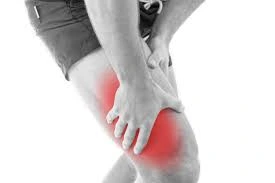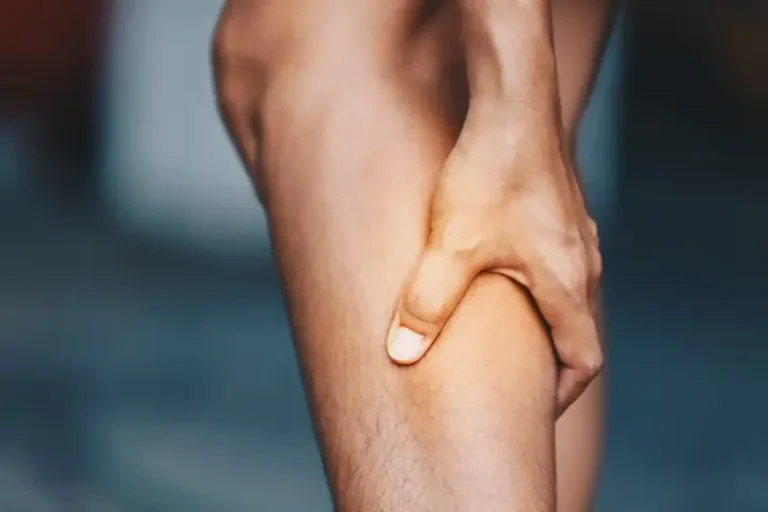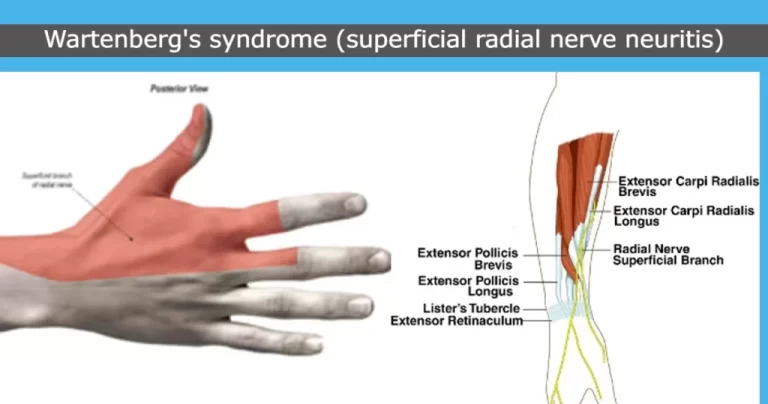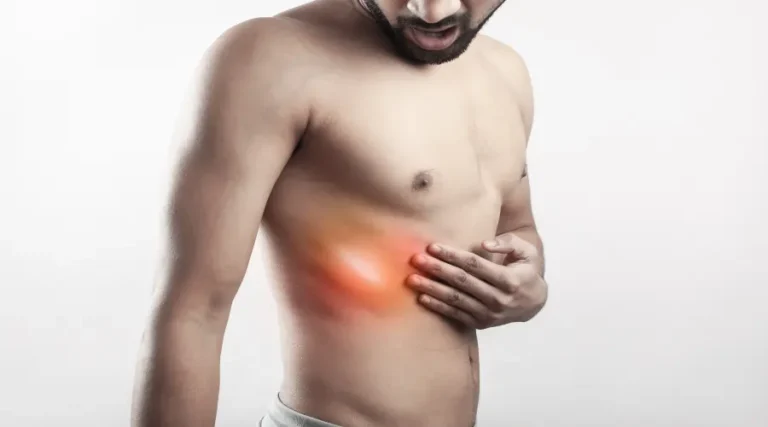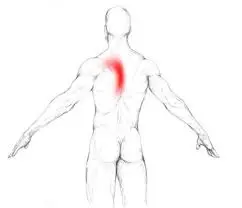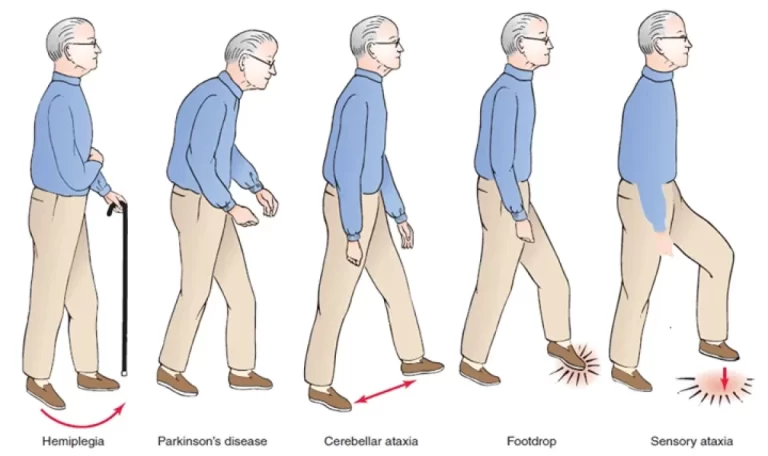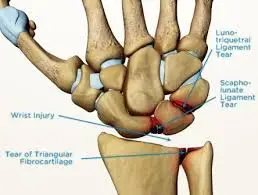Vastus Lateralis Muscle Pain
What is a Vastus Lateralis Muscle Pain?
The vastus lateralis is one of the four quadriceps muscles on the thigh’s outer side. It plays a crucial role in knee extension, walking, running, and stabilizing the leg during movement. Vastus lateralis muscle pain can arise from various factors such as overuse, strain, trauma, or nerve irritation. This pain may present as soreness, tightness, or sharp pain, often impacting mobility and daily activities.
Understanding the causes, symptoms, and treatment options for vastus lateralis pain is essential for proper recovery and prevention. Whether due to sports activities, prolonged sitting, or muscle imbalances, effective management can help restore function and reduce pain.
The largest of the four quadriceps muscles, the vastus lateralis is found on the outside of the leg. It is essential for stabilizing the leg during movement and for knee extension.
The vastus lateralis helps expand your knee joint by coordinating with the other quadriceps muscles. Additionally, it actively maintains the position of the kneecap and thighs when running and walking.
Anatomy of Vastus Lateralis Muscle Pain:
The largest of your thigh’s four quadriceps muscles is the vastus lateralis. It might be found on the outside or lateral portion of the thigh.
The majority of muscles are bone-attached. The origin and insertion points are the names given to these attachment sites. The following are the locations of the vastus lateralis insertion and origin:
- Origin: The upper inter-trochanteric line of your femur, or thigh bone, is where the vastus lateralis begins. Additionally, it originates from the lateral intermuscular septum, the supracondylar ridge, the linea aspera, and the base of the greater trochanter.
- Insertion: The vastus lateralis begins at the tibial tubercle, an elevated area of the upper shin, and travels down your lateral thigh before joining the lateral quadriceps tendon. With a flat aponeurosis (sheath of connective tissue) on the outside of your thigh, the muscle is a huge, flat mass with numerous attachments.
The femoral nerve that emerges from lumbar (lower back) levels two, three, and four controls (innervates) the vastus lateralis. The upper thigh’s lateral circumflex femoral artery supplies blood to the muscle.
Causes of Vastus Lateralis Muscle Pain?
The following are the most common causes of vastus lateralis muscle pain, which can range from overuse injuries to underlying medical conditions:
- Overuse and Strain on the Muscles
- Running, cycling, and squatting are examples of repetitive exercises that might overwork the vastus lateralis.
- Inappropriate warm-ups or abrupt changes in exercise intensity can cause microtears in the muscle fibers, which can result in pain and inflammation.
- Direct Injury or Trauma
- The muscle may be bruised or strained by an accident, fall, or direct blow, resulting in pain and edema.
- Excessive contraction or stretching of the vastus lateralis can result in muscle tears.
- Muscle imbalances and poor biomechanics
- Excessive strain on the vastus lateralis can result from weakness in the surrounding muscles, such as the hamstrings, glutes, or hip flexors.
- Uneven strain and pain might be caused by bad posture, incorrect running form, or differences in leg length.
- ITBS, or iliotibial band syndrome
- The vastus lateralis is irritated by the tightening of the iliotibial (IT) band, which runs down the outer thigh.
- ITBS is prevalent in athletes, cyclists, and runners who do repetitive leg motions.
- Muscle knots and trigger points
- Localized pain and stiffness may result from myofascial trigger points, also known as muscle knots, in the vastus lateralis.
- Prolonged muscle stress, dehydration, or improper stretching can all lead to the development of these knots.
- Sciatica or Nerve Compression
- Sometimes misdiagnosed as muscle pain, pain radiating into the outer thigh might be caused by compression of the femoral or sciatic nerve.
- Nerve-related pain may be exacerbated by lower back disorders including spinal misalignment or ruptured discs.
- Muscle Soreness with a Delayed Onset (DOMS)
- Temporary pain may result from intense activity, particularly from eccentric motions like deep squats or downhill sprinting.
- After an exercise, DOMS often peaks 24–72 hours later and goes away in a few days.
- Deep vein thrombosis (DVT) or circulatory problems (rare but serious)
- Rarely, a blood clot (DVT) may be the cause of vastus lateralis pain, particularly if there is warmth, redness, or swelling.
- DVT needs to be treated right away.
- Health Issues
- Fibromyalgia: A persistent pain disorder that can lead to soreness in the vastus lateralis and other muscles.
- Chronic trigger points that result in chronic muscle pain and stiffness are known as myofascial pain syndrome.
Symptoms of Vastus Lateralis Muscle Pain
Depending on the underlying cause and severity of the problem, vastus lateralis muscle pain can manifest as a variety of symptoms. Typical signs and symptoms include:
- Pain and Discomfort
- ache in the outer thigh that is achy, throbbing, or acute.
- Movement, such as walking, jogging, or squatting, might exacerbate pain.
- increased soreness following extended workouts or activities.
- Tightness and Stiffness of Muscles
- sensation of constriction or limited thigh mobility.
- difficulty bending or fully extending the knee.
- tightness that gets worse after spending a lot of time sitting down.
- Sensitivity and Tenderness
- Pressing or massaging the muscle may cause it to feel sore.
- Pain may radiate up toward the hip and along the outer thigh.
- The Inflammation and Swelling
- mild to moderate edema, particularly in the aftermath of an injury.
- When muscles are strained or irritated, there may be warmth or redness.
- Leg Weakness No.
- inability to stay stable or balanced.
- a feeling of weakness when bearing weight or extending the knee.
- reduced strength, which makes it challenging to stand up or climb stairs.
- Cramps or Muscle Spasms
- Sharp pain is caused by abrupt, uncontrollable muscular contractions.
- Cramps can happen during or after vigorous exercise.
- Pain Associated with Particular Motions
- Running, squatting, or lunging are among the exercises that can exacerbate pain.
- Long-term sitting and stair climbing might also cause pain.
- If there is nerve involvement, radiating pain, or nerve symptoms
- Burning, tingling, or numbness in the outer thigh.
- pain that radiates to the lower leg, knee, or hip.
- It’s critical to see a healthcare provider if the pain is severe, ongoing, or accompanied by swelling, redness, or trouble moving the leg.
Diagnosis of Vastus Lateralis Muscle Pain
To identify the precise cause of vastus lateralis muscle pain, a physical examination, patient history, and occasionally imaging studies are used. Usually, a healthcare professional will take the following actions:
Medical History Assessment
- The doctor will inquire about the pain’s location, duration, and intensity.
- Accidents, injuries, or recent physical activity.
- any underlying illnesses, such as nerve problems or arthritis.
- Workplace or exercise routines that can lead to strained muscles.
Physical Examination
- Palpation (Touch Examination): To feel for soreness, muscular knots, or swelling, the physician will apply pressure to various parts of the leg.
- Range of Motion (ROM) Tests: To assess stiffness and pain during movement, the patient may be asked to bend, rotate, or extend their leg.
- Strength testing is the process of evaluating quadriceps strength to look for imbalances or deficiencies.
- Gait analysis is the process of observing a patient’s running or walking to spot biomechanical problems.
Special Tests for Muscle and Nerve Involvement
- The Ober’s Test is used to check for iliotibial (IT) band tightness, which may be a factor in vastus lateralis pain.
- The Straight Leg Raise Test is used to determine whether there is nerve involvement, such as sciatica or compression of the femoral nerve.
Imaging Tests
- To rule out other illnesses, the doctor could prescribe imaging studies if the pain is severe or chronic.
- X-ray: To look for problems with the bones, such as arthritis or fractures.
- Ultrasound: To evaluate inflammation, muscle rips, or soft tissue injuries.
- To identify strains, tears, or nerve compression, MRI (Magnetic Resonance Imaging) offers a close-up image of the muscles, tendons, and nerves.
- Nerve Conduction Studies or Electromyography (EMG) (If Nerve Issues Suspected)
- These examinations assess nerve function and can be used to detect injury or compression of the vastus lateralis muscle.
- Blood Tests (Very Infrequent)
- Blood tests may be performed in suspected cases of deep vein thrombosis (DVT), inflammatory diseases, or infections.
Treatment of Vastus Lateralis Muscle Pain
The underlying cause, severity, and whether the pain is from an injury, strain, or another ailment all influence how the vastus lateralis muscle is treated.
Pain, thigh swelling, or difficulty walking might result from injuries to your quadriceps or vastus lateralis muscles. Following a vastus lateralis injury, several treatments could aid in your recovery.
When recovering from vastus lateralis injuries, consulting a physical therapist may be beneficial.
Heat and Ice
Your lateral thigh may be treated with ice in the initial days following an injury to manage pain and reduce swelling and inflammation. Applying ice for 10 to 15 minutes is recommended; to prevent frost burns, place a towel or piece of clothing between the ice and your skin.
You can use heat to increase tissue mobility and circulation two to three days after the injury. Apply heat for ten to fifteen minutes. Once more, caution is necessary to prevent burns.
Massage
Following an injury to the quadriceps or vastus lateralis, massage can help reduce pain and increase circulation. Before stretching to increase quadriceps motion, massage treatments can increase tissue mobility.
Physical Therapy of Vastus laterally muscle pain:
Your physical therapist could suggest specific exercises to help you rebuild strength and range of motion if you have suffered an injury to your vastus lateralis.
Floor extension
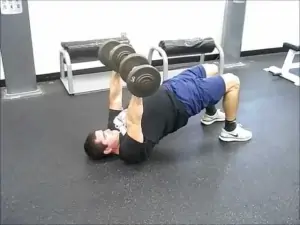
- Take a seat upright on the ground. With your chest proud, bring your shoulders down your back. With your left foot flat on the ground, bend your left knee toward your chest. With your foot pointing slightly to the right, extend your right leg in front of you.
- Throughout the exercise, maintain your right quad contracted while holding beneath your left knee with both hands clasped.
- Breathe out.
- Raise your right leg as high as you can in the air without letting your posture deteriorate or bend away from the wall. Maintain this posture for one count.
- After taking a breath, carefully return to your starting position by lowering your right leg. Keep your right heel from slamming back down.
- After three or four sets of 12 repetitions, swap legs. Add an ankle weight over the thigh of the extended leg, not on the ankle, and repeat the exercise for the same number of repetitions if you find it to be somewhat easy.
Lateral heel drop
- Maintain a tall stance, place your right foot on a little step, and keep your left leg straight but not locked. With your left foot flat on the ground, your right knee should be slightly bent. You should avoid putting your right knee over your toes. Balance by tensing your core.
- Until both legs are completely straight, exhale and push up off your right leg. Aim to step up with your hips level.
- As you take a breath, flex your left quadriceps, and gradually return your left foot to its initial position.
- After performing this exercise 15 times for three or four sets, control the negative portion of the movement by repeating it with your right leg on the floor and your left leg on the treadmill.
Step downs
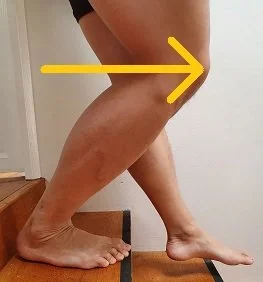
- Place your left foot off to the side and your right foot on the step.
- Take a breath. Bend your right knee and flex your left quadriceps until your left foot is flat on the ground. Once more, make sure your hips are always level.
- Push off your left foot, exhale, contract your core, and return to your starting position.
- After three or four sets of 15 repetitions, swap legs.
Leg extension
- Take a seat upright and go to the front of the chair.
- Put a resistance band around your ankle and place it beneath the chair.
- Then, stretch back and grasp the band with your hand.
- Exhale, then slowly stretch your leg fully out in front of you in a single motion.
- Breathe in, flex your quadriceps, and then slowly return the leg to its 30-degree position.
- Do three to four sets of 15 repetitions. Until your knee feels healthy again, don’t forget to maintain that 30-degree angle.
Single leg raises
- With your left foot flat on the mat and your left knee bent, lie on your back. If you choose, place an ankle weight on your thigh as you fully extend your right leg in front of you. Don’t use a weight if this is your first time doing the workout.
- Raise your right leg about 2 inches off the mat by contracting your right quadriceps and tensing your core. Throughout this workout, keep it raised. Be careful not to arch your back. There should be no gap between the mat and your back.
- Take a breath. Raise your right leg till your right and left thighs are equal while contracting your right quadricep. Maintain this posture for one count.
Terminal knee extensions (TKEs)
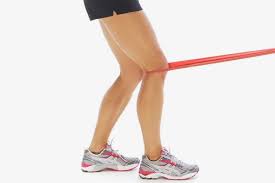
- With the other end facing the anchor, slip the resistance band up to just above the rear of your right knee after tying it around a strong anchor. Reposition yourself until the band is taut. Keep your right knee slightly bent while you straighten your left leg.
- Emphasize the contraction in your right quadriceps and push your right knee back to match your left knee. Once more, you want to feel the vastus medialis constricting and tightening. For one count, maintain this posture while facing opposition.
- Bend your right knee back to the beginning position after taking a deep breath and gradually releasing the tension in the resistance band.
- Use a thicker band or move farther from the anchor to make the band more taut if you feel no resistance in your vastus medialis.
- After three or four sets of 15 repetitions, switch to your left leg.
Conclusion of Vastus Lateralis Muscle Pain:
A frequent ailment, vastus lateralis muscle pain can be caused by trauma, overuse, muscle tension, or underlying biomechanical problems. It frequently manifests as outer thigh soreness, tightness, or severe pain that interferes with movement and day-to-day activities. To reduce pain and avoid recurrence, early diagnosis and appropriate treatment such as rest, cold or heat therapy, stretching, and strengthening exercises are essential.
Conservative therapies including massage, physical therapy, and painkillers work well most of the time. However, to rule out underlying disorders like nerve compression or structural abnormalities, persistent or severe pain may need to be treated by a physician. People can support their vastus lateralis and general lower body health by adopting good posture, doing strength training regularly, and using injury prevention measures.
FAQs
What is the vastus lateralis artery?
The vastus lateralis is mostly supplied by the lateral circumflex femoral artery. There are three major branches of the lateral circumflex femoral artery: descending, transverse, and ascending. The profound femoris, also known as the deep artery of the thigh, has perforating arteries that provide some blood supply to the muscle.
Is it possible to damage your vastus lateralis?
A rare injury that can be effectively treated with surgery and return to preinjury activity is an isolated vastus lateralis rupture.
What’s causing my tight vastus lateralis?
Release of Vastus Lateralis Trigger Points
This is a tight and dysfunctional part of the muscle. Your back’s inflamed nerves are frequently the culprit. It can be removed by applying direct pressure to the area.
What is the vastus lateralis good for?
Muscle of the Vastus Lateralis
The largest muscle in the quadriceps group is one of the four muscles in that group. The vastus lateralis helps expand your knee joint by coordinating with the other quadriceps muscles.
How can thigh muscle soreness be resolved?
The reason for upper thigh pain determines how to treat it. Rest, heat, ice, compression, elevation, and light massage are all common at-home treatments for minor injuries.
How is the vastus lateralis reduced?
The Vastus Lateralis Stretch
This tightness may be the result of underuse from extended sitting or overuse from exercises like jogging or walking. Myofascial release treatments and stretching are useful methods for increasing flexibility and encouraging muscular relaxation.
How can pain in the vastus medialis be treated?
Options for Vastus Medialis Pain Treatment. A multimodal strategy is frequently recommended to relieve vastus medialis pain. This includes using over-the-counter drugs to treat pain as well as rest, ice application, compression techniques, and elevation (RICE).
How long does it take for a vastus lateralis to recover?
Injuries to the quadriceps can take anywhere from a few days to many months to heal, depending on the type of damage. For all quadriceps injuries, treatment aims to get the patient back to their pre-injury level of activity.
Which exercises are effective for the vastus lateralis?
When performing knee extension exercises, the Vastus Lateralis muscle is used. Because it tests your balance and leg mobility, the lunge is one of the greatest exercises for targeting the Vastus lateralis.
What is the vastus lateralis nerve?
The L2, L3, and L4 muscular branches of the femoral nerve innervate the vastus lateralis muscle.
What occurs if there is weakness in the vastus lateralis?
Pain, thigh swelling, or trouble walking might result from injuries to your quadriceps or Vastus Lateralis muscles. If the muscle group doesn’t work correctly, it could also result in injury.
How is the vastus lateralis relaxed?
Stretch of the Vastus Lateralis-IT Band
Wrap your hand around the foot of your top leg and stretch your knee as much as you can while side-lying with both legs flexed to a 90-degree angle at the hip and knee. If the foot is out of reach, use a band, belt, or cloth to help.
What causes the soreness in my vastus lateralis?
The majority of vastus lateralis tears are caused by activities performed without an adequate warm-up. The muscle can rip since it doesn’t have time to stretch before use. Pain following trauma, like being struck by a ball, is more likely to result in a bruise or contusion.
References
- Levarda, T. (2024, November 16). Acupuncture for vastus lateralis pain — Morningside Acupuncture NYC. Morningside Acupuncture NYC. https://www.morningsideacupuncturenyc.com/blog/acupuncture-for-vastus-lateralis-pain
- Trigger point pain from Vastus Lateralis and how to find relief | Painalog. (n.d.). https://www.painalog.com/trigger-point-pain-from-vastus-lateralis-trigger-point-four-and-how-to-find-relief/

